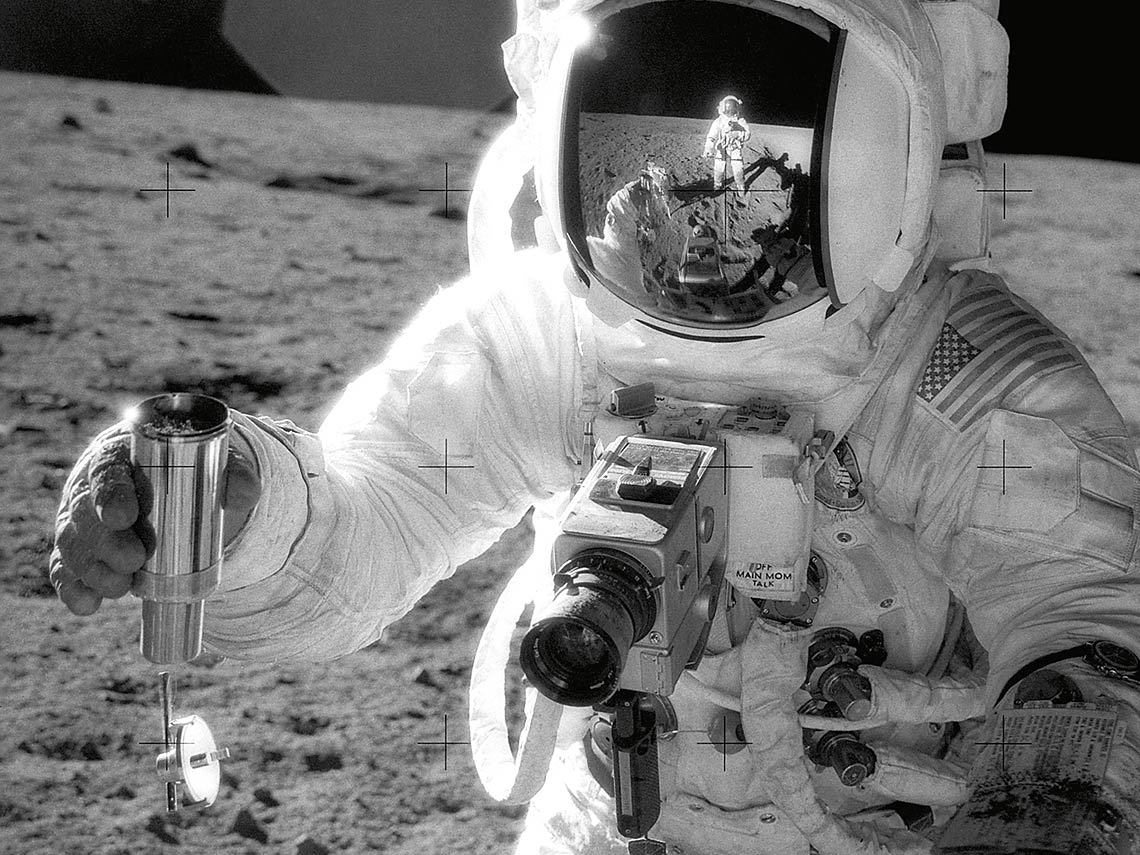Analysis of a lunar rock sample at the BRGM
In 1972, thanks to its advanced technological equipment, the BRGM had the privilege of analysing a sample of moon rock. Claude Lafoy tells us here about that never-to-be-forgotten experience.

"After the American moon landings, the BRGM laboratory was one of those selected across the world to take part in studying the components of various lunar samples. The announcement caused tremendous excitement among all our staff. Daily routine went out of the window as we pulled out all the stops to show North America what we could do! A dust-free "clean room" was installed, which no-one could enter without a white coat, face mask and cap. As soon as the lunar samples arrived from the National Museum of Natural History in Paris, a hush came over the building: every so often, a ghostly white figure would be seen scuttling down a corridor, hugging the secrets of what the moon is made of. One of the samples was a "thin section" prepared in North America: a fragment of moon rock fixed to a glass slide and carefully ground down and polished with a diamond grinder until it became transparent to light, so that the different minerals within it could be observed under a microscope. After the thin section had been studied and described by means of an image analyser, the eminent mineralogists on the top floors would quantify the different minerals it contained. But before embarking on a direct study of the precious sample - which was carefully locked away in a safe every evening - innumerable blank experiments had to be carried out - until at last we were ready to go for the actual study.
My heart was thudding as I pressed the START button on the analyser…
When the great day came, all of the Bureau's directors came to the lab. It was very hot that day, but we were sweating buckets from sheer nerves as well. After the final tests, I very carefully placed the precious thin section under the microscope. My heart was thudding as I pressed the START button on the analyser - but as soon as the lens began moving downwards, a peculiar noise started up. I moved fast to stop the machine, but nothing happened: the lens carried on down until it crushed the slide! For a few seconds there was absolute silence, until one of the directors slammed out of the room with a single explosive comment: "Oh, brilliant!" I was paralysed. My blood seemed to freeze. I could see myself being sacked on the spot, ending up as a dishwasher for Clo-Clo la Frite, the well-known chip shop on the station car park at Les Aubrais. But none of that happened. After endless discussions on what caused the catastrophe, the verdict came that the temperature was at fault. But the incident still had to be reported to the Museum Director, whose quavering tones demanding news of her sample were frequently to be heard. Nobody wanted to own up, so whenever she came to the lab, everyone would scatter. After several months of ingenious evasion tactics, the truth finally had to come out. Luckily, only the edge of the slide had been damaged, and after skilful repair the study was able to go ahead after all. It's funny, but since then, whenever I have chips I think about the moon..."
